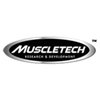As bodybuilders, we understand that it takes years to maximize development regardless of how hard we train or how serious we take our diet. We all push ourselves to the point of failure; it is our desire to drive our bodies to the absolute limit that feeds our hunger for the sport.
As a result, it is very easy for us to disregard the countless claims made by sport nutrition companies promising us instant strength gains and longer, more productive workouts. No shortcuts. Eating, sleeping and breathing hardcore training, that's how we see results.
If we as bodybuilders are doing everything right, then why is it that we all hit plateaus? Should we not continue to see gains week after week, month after month?
Despite our most concentrated efforts we know that this is not the case. No matter what we do, our muscles eventually get fatigued and our strength gains eventually become stagnant. This piece will further describe why this is happening... and how we can overcome it.
Muscle weakness is a direct term for the inability to exert force with one's muscles to the degree that would be expected given the individual's general physical fitness.
In weight training, with each rep that you perform, your muscles contract in one of two ways: a concentric contraction (muscle actively shortening) or an eccentric contraction (muscle actively lengthening).
Intense weight training causes a rapid build-up of metabolites (or "intra-muscular toxins") with every muscle contraction. This accumulation triggers a decrease in the pH level of the muscle tissue interfering with the muscle's ability to release calcium.
Metabolites
Metabolites are the intermediates and products of metabolism. The term metabolite is usually restricted to small molecules. A primary metabolite is directly involved in the normal growth, development, and reproduction. A secondary metabolite is not directly involved in those processes, but usually has important ecological function.
Unfortunately, the final outcome of this accumulation is always the same: fatigue and a rapid decline in muscle power, strength and endurance, thus compromising the performance of the athlete.
Glycine-l-arginine-alpha-ketoisocaproic Supplementation
Two recent university studies on high-intensity anaerobic exercise have delivered groundbreaking results. They argue that fatigue toxins can be controlled and that strength and endurance can be immediately increased by supplementing pre-workout with Glycine-l-arginine-alpha-ketoisocaproic acid calcium.
The First Study
The first significant study into the benefits of Glycine-l-arginine-alpha-ketoisocaproic acid calcium with anaerobic exercise was conducted by Dr. Bruce R. Stevens and his colleagues at the University of Florida.
The purpose of their study was to quantify the effects of Glycine-l-arginine-alpha-ketoisocaproic acid calcium supplementation on human muscle dynamic performance (strength, work and fatigue) measured under conditions of acute, exhaustive high-intensity anaerobic isokinetic exercise.1
Thirteen healthy male subjects participated in a double-blind, randomized crossover study comparing the effects of Glycine-l-arginine-alpha-ketoisocaproic acid calcium versus isocaloric sucrose using a computer-controlled isokinetic dynamometer over a 23-day interval.
The Second Study
The second study conducted at Truman State University, by Britni Buford and Dr. Alexander Koch, examined the effects of pre-workout supplementation of Glycine-l-arginine-alpha-ketoisocaproic acid calcium on repeated bouts of anaerobic cycling performance.2
Following the exact same dosing regimen as the University of Florida study, 10 healthy male subjects completed a randomized, double-blinded, placebo-controlled exercise protocol of two sessions separated by seven days.
What Does It Mean?
The findings of these two studies have the bodybuilding community abuzz. In both cases Glycine-l-arginine-alpha-ketoisocaproic acid calcium supplementation resulted in significantly increased levels of athletic performance when compared to the isocaloric sugar treatment.
The University of Florida study showed that Glycine-l-arginine-alpha-ketoisocaproic acid calcium increased the ability to sustain muscle force by up to 28 percent and increase muscle work total by 10.5 percent1. This resulted in an increase in sustained muscle performance during anaerobic exercise.
Truman State had similar findings, concluding that Glycine-l-arginine-alpha-ketoisocaproic acid calcium supplementation improved retention of mean power during repeated bouts of supermaximal exercise.2
Potential Benefits
The potential benefits of Glycine-l-arginine-alpha-ketoisocaproic acid calcium supplementation to bodybuilders are staggering. Imagine a 10.5 percent increase in strength and an increase of up to 28 percent in your ability to sustain muscle force. Finally we have the help we need to break through those stubborn, mentally draining plateaus.
Science has shown that all it takes is a single serving of Glycine-l-arginine-alpha-ketoisocaproic acid calcium 30-45 minutes prior to hitting the iron to experience the benefits described in the studies.
This is not creatine. Creatine needs time to allow the body to absorb it. The effects of Glycine-l-arginine-alpha-ketoisocaproic acid calcium are immediate. No loading or taking the supplement on off days is needed.
The power of Glycine-l-arginine-alpha-ketoisocaproic acid calcium will enable bodybuilders to take their training to a level that was previously thought unattainable. By winning the battle against fatigue toxins we will finally be able to make the most of our time in the gym and achieve the results that we deserve.
With Glycine-l-arginine-alpha-ketoisocaproic acid calcium, we finally have a supplement that delivers on its promises. Glycine-l-arginine-alpha-ketoisocaproic acid calcium is not backed by hype; it is backed by research and results.
References
- Stevens BR., et al. (2000). High-Intensity Dynamic Human Muscle Performance Enhanced by a Metabolic Intervention. Med Sci Sports Exerc. 32(12):2102.
- Buford BN., et al. (2004). Glycine-Arginine-Alpha-Ketoisocaproic Acid Improves Performance of Repeated Cycle Sprints. Med Sci Sports Exerc. 36(4):583.
